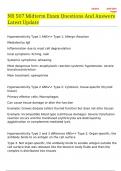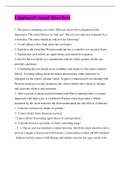Lecture notes
Central Nervous System Structures and Neurotransmitters
- Institution
- University Of Exeter (UoEX)
- Book
- Human Physiology
A summary of the notes from the lectures covering the structure of the central nervous system (CNS) and how neurotransmitters work within the CNS.
[Show more]













